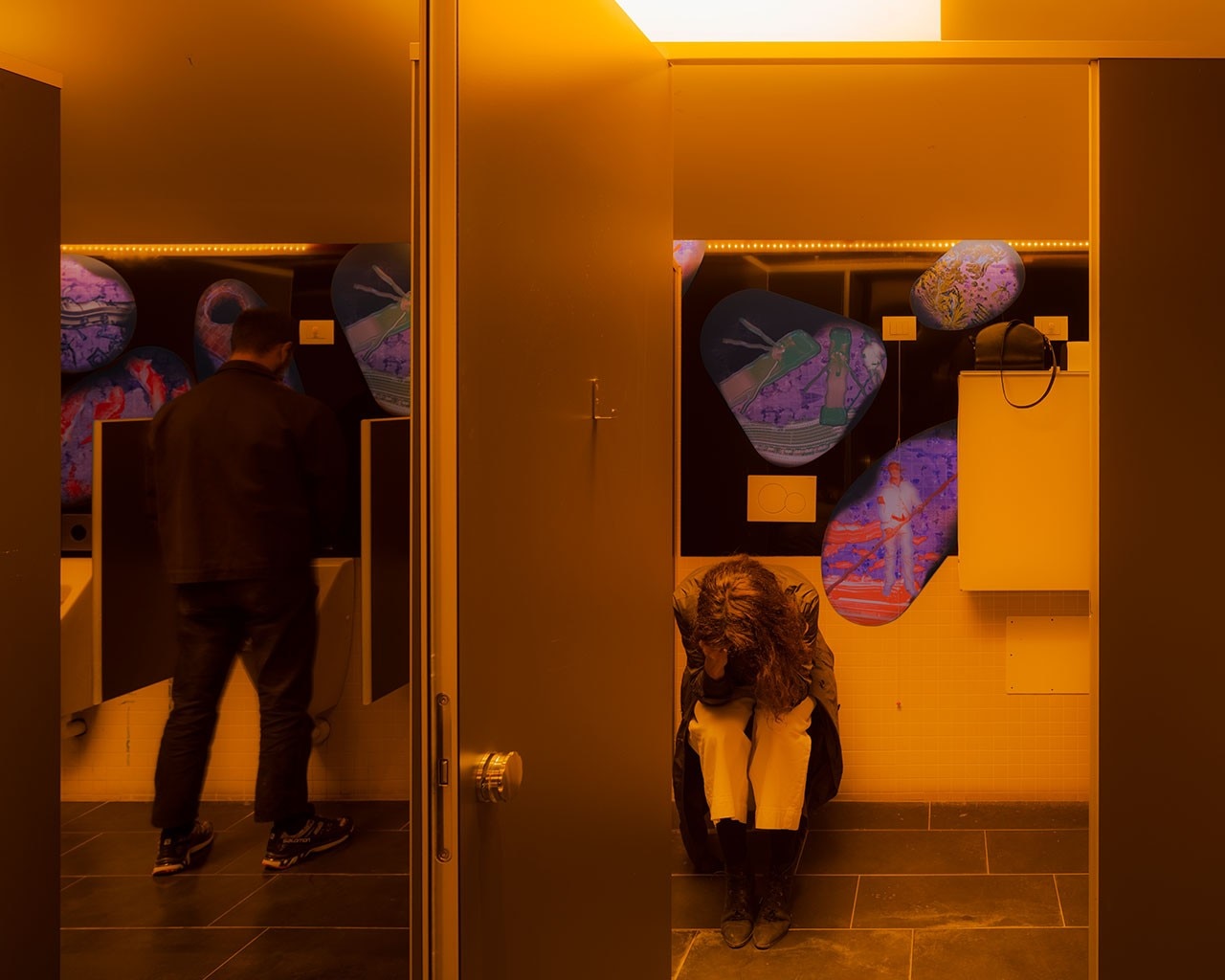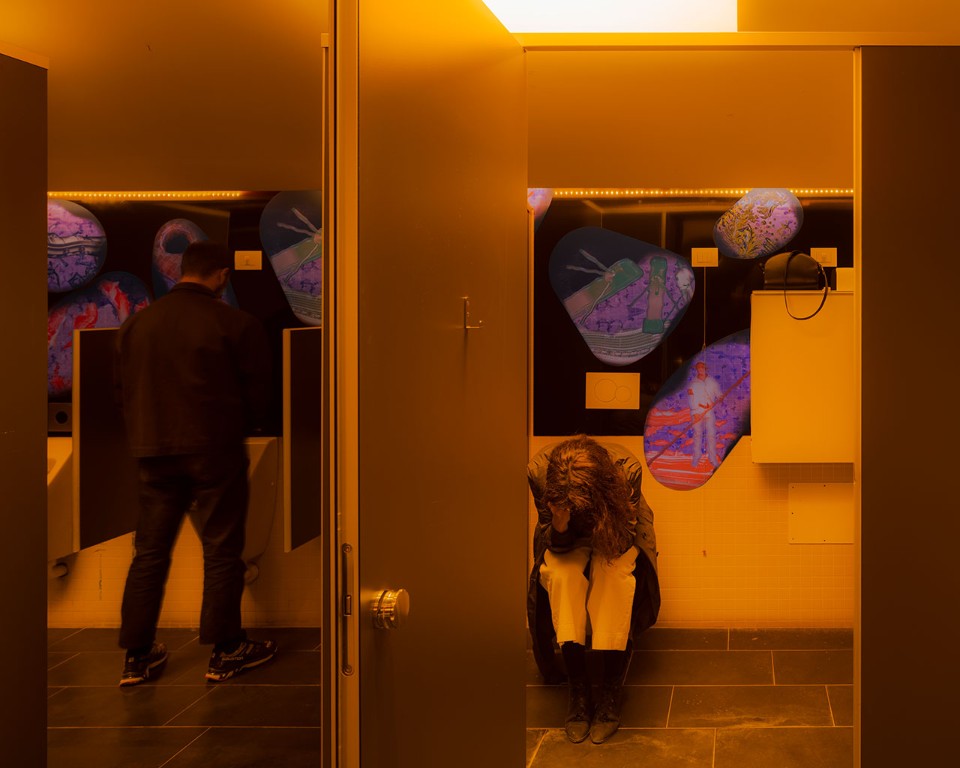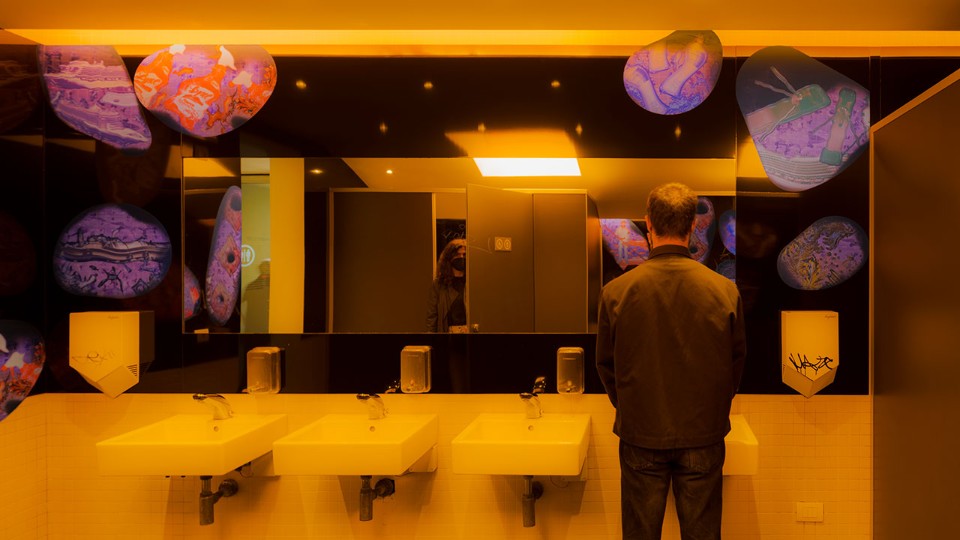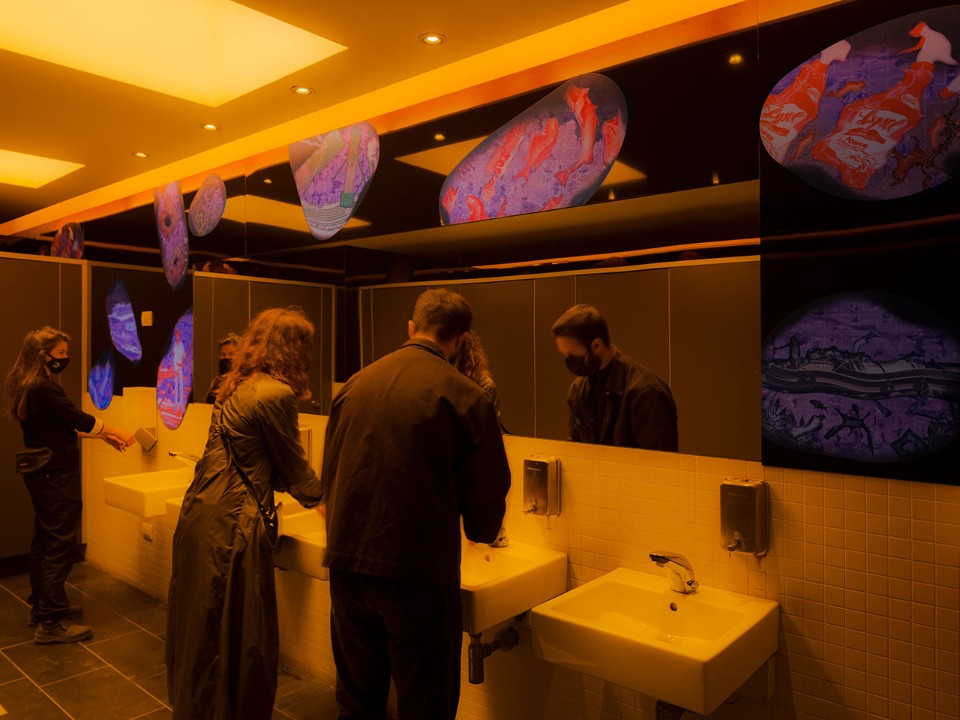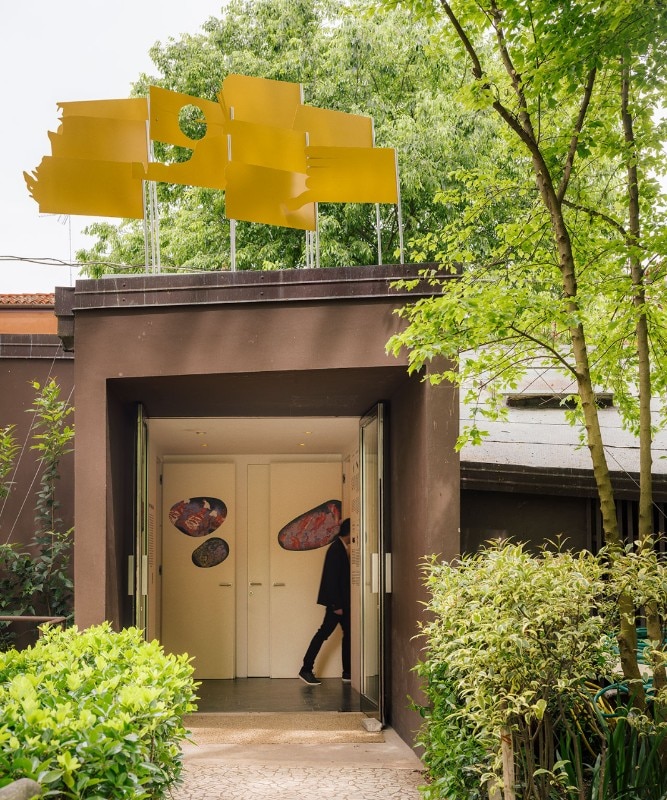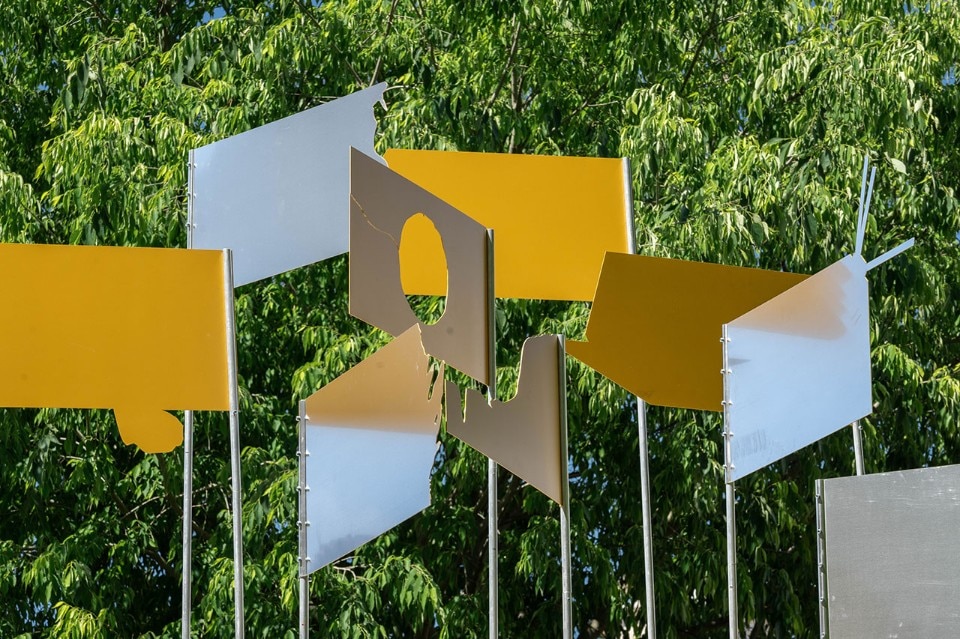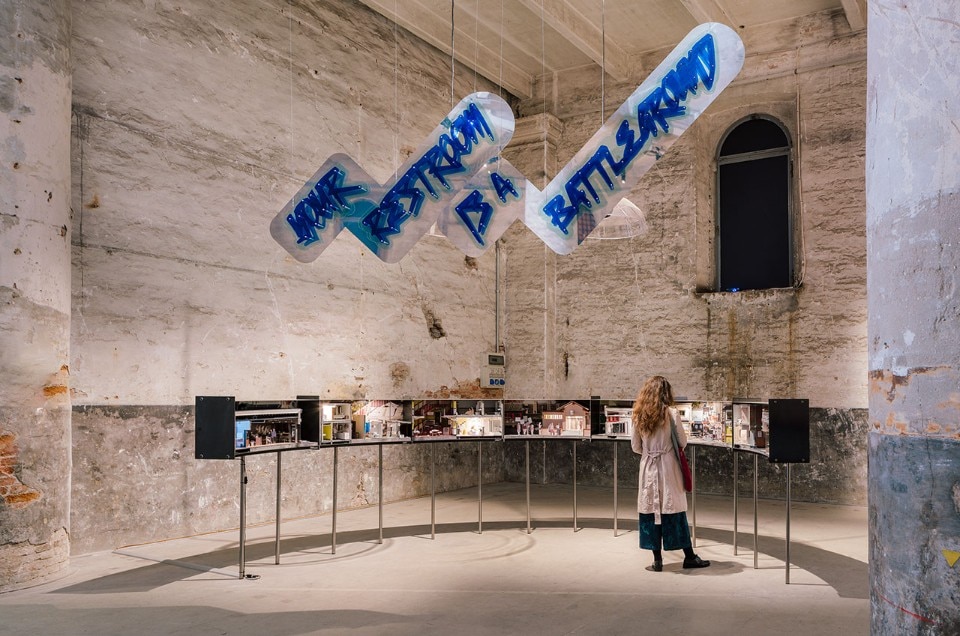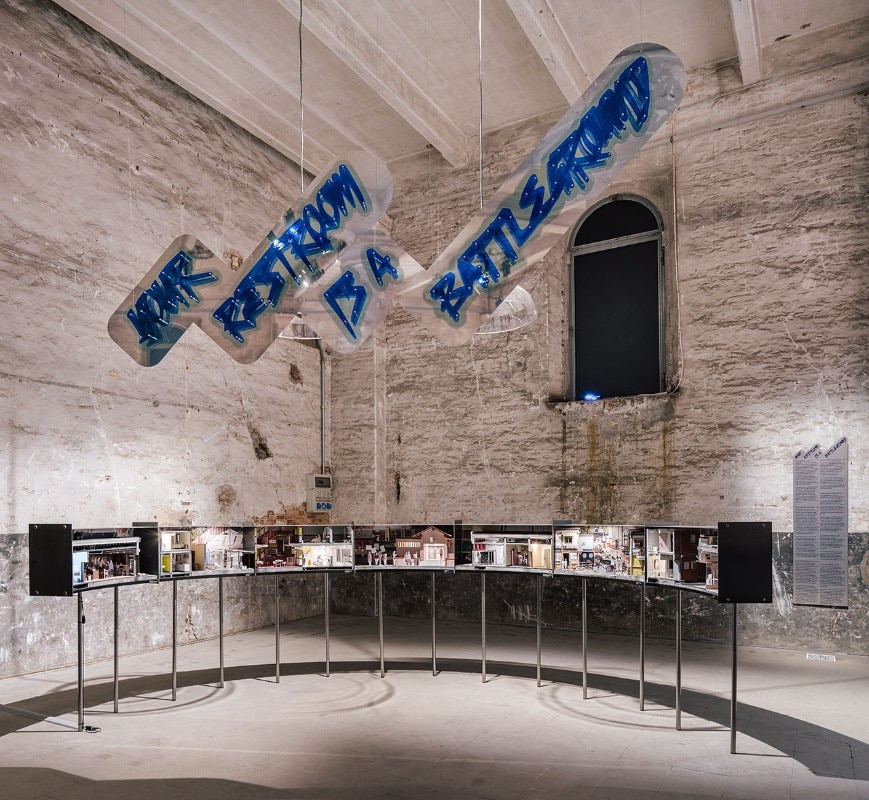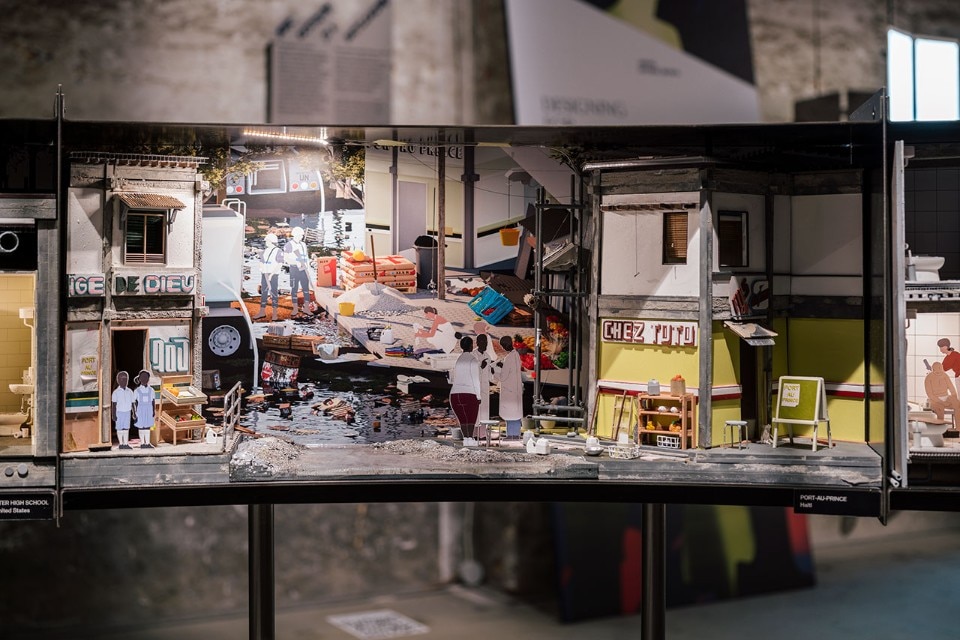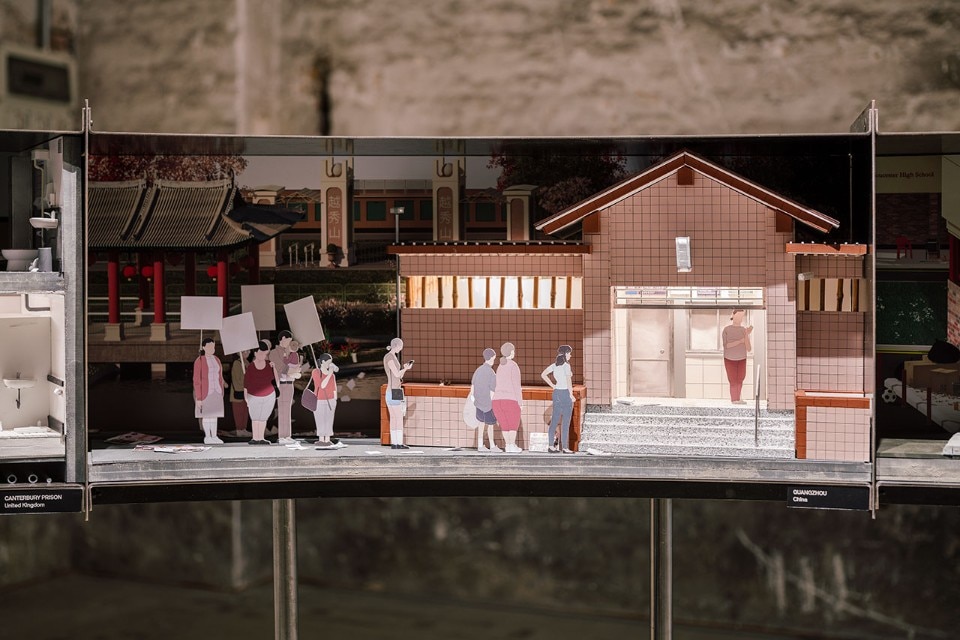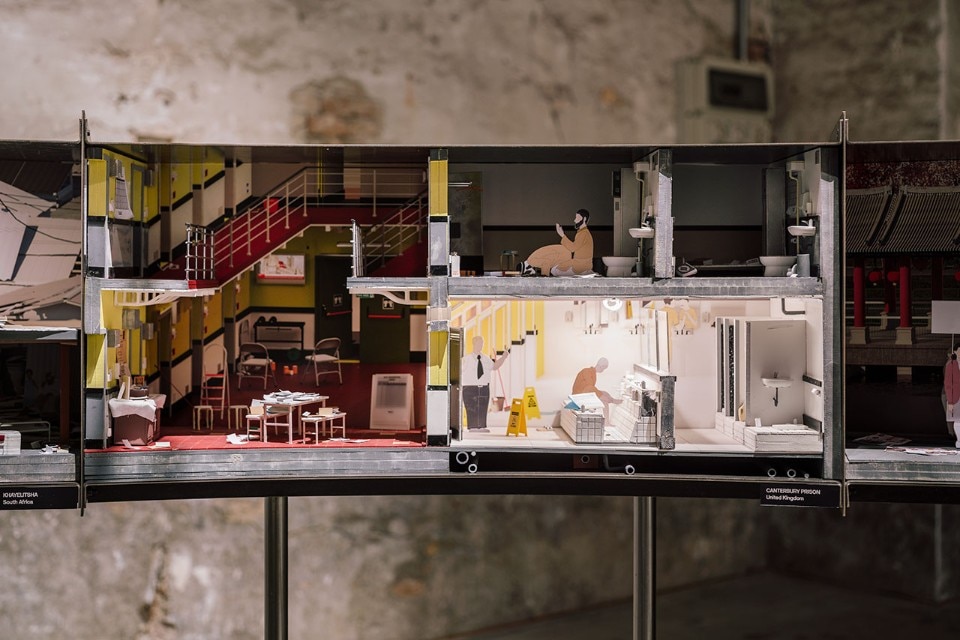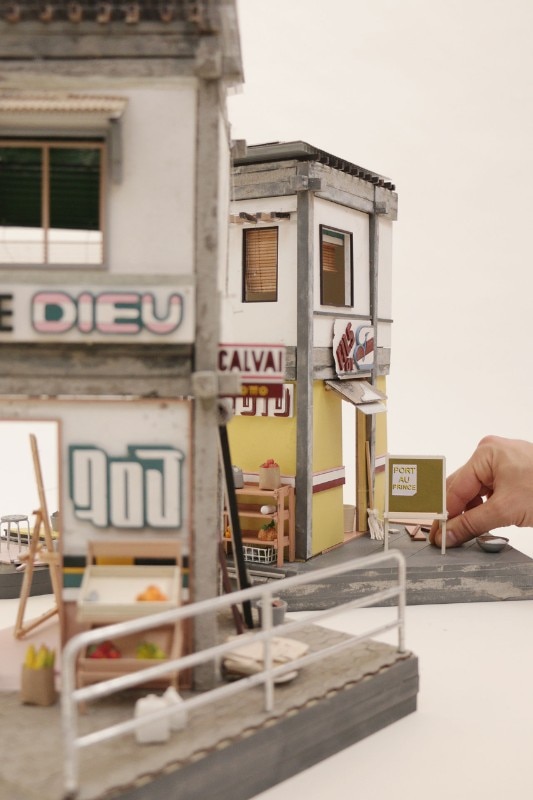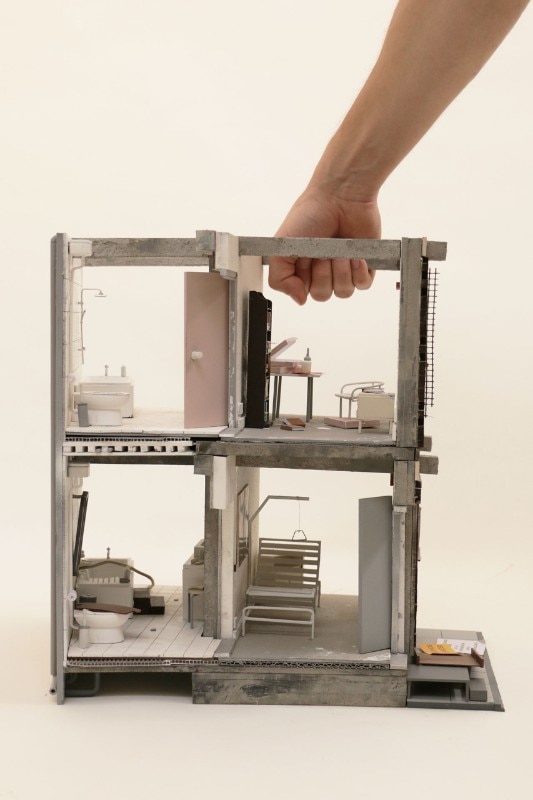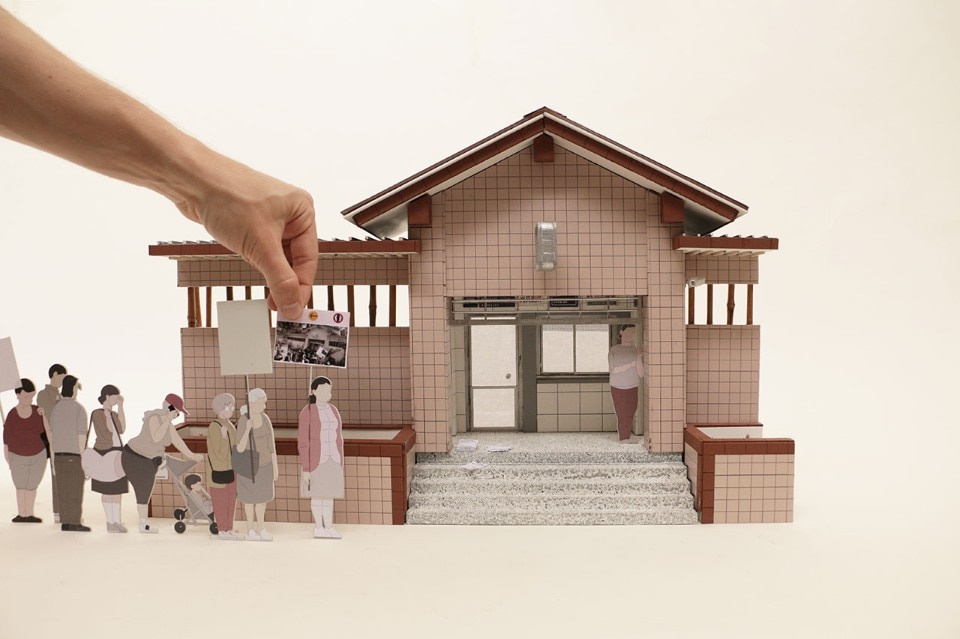Pablo is a disabled Colombian young man. Together with his mother Jaqueline, he has been fighting for 30 years to make toilets (public and private) in his country accessible. In England, a fierce controversy was sparked in 2009 when it was reported that in the Canterbury Prison footbaths and squat latrines had been installed for the 100 Muslim inmates. In Haiti, the lack of public restroom facilities is endemic, and, after the earthquake of 2010, even private ones are at risk due to the difficult management of wastewater.
In Philadelphia, after the arrest of two young black men who had asked to use the restroom in Starbucks before ordering anything, a huge public protest broke out on 12 April 2018, forcing the company to close 8,000 shops across the country. The list goes on - and, if you would like to know more about it, we recommend that you read the original and interesting research by Matilde Cassani, Ignacio Gonzalez Galán, Iván Lopez Munuera and Joel Sanders on display at the Arsenale and Giardini, also available online and as a podcast - but the concept is clear: bathroom design (whether public or private) involves a lot more politics than we might think.
Toilets are a serious issue; the numbers have been saying that for several years now: 2.3 billion people (the figures are from 2016) do not have access to safe toilets. And anyone who saw Peter Farrelly’s moving film Green Book, winner of three Oscars in 2019, knows that in 1950s Alabama even being an admired and brilliant classical pianist was not enough to give an African American access to white-only toilets.
The extent to which the problem is also political is now demonstrated by the work of Cassani, Galán, Munuera and Sanders, who set the issue in a broader context. The bathroom (its use, its accessibility, its functioning) is one of the battlegrounds where, in the 21st century, the fight for rights, inclusion and equality is being played out. Historically and in alternating phases, right here, in the humblest of architectural spaces, reduced to pure function, gender, race, economics, hygiene and health issues intersected.
Iván Lopez Munuera, critic and curator, Honorific Fellow at Princeton University, tells us how it all began: “We all know each other for so long, we have collaborated in the past (Oslo Triennial, ndr). We all have been working in different ways on how restrooms are political, coming from different perspectives. For us it was very important not to try to give a simple solution, but to understand precisely how restrooms are political devices that offer a wide perspective on a number of issues in different parts of the world”.
The reason they decided to focus on bathrooms is simple. “Restrooms are normally considered merely functional, but there are so many important decisions – spatial, technological, environmental – that are concentrated here… It’s one of the most complex architectural devices, even though it is often presented as neutral. We thought that this concentration of architectural decisions, was very important for us to address. For us, the restroom is the centre of so many decisions that are architectural as they are and political”, says Ignacio Gonzalez Galán, who teaches Architecture at Barnard College, Columbia University, in New York.
Restrooms are normally considered merely functional, but there are so many important decisions – spatial, technological, environmental – that are concentrated here.
Bathrooms are a political issue, constantly evolving. Matilde Cassani, architect and teacher at the AA in London: “It’s always updating: the battleground behind the restrooms changes according to the historical moment. Now for instance, gender is one of the most discussed topics. It’s like a filter though which the society is updating. That’s why I think they’re quite powerful. They are containers of so many decisions that can be considered in a wider context”.
In addition, they say, standards differ between countries, that have to address and solve different problems. There is no one size fits all solution. “Restrooms have different problematics around the world, they’re contextual, they’re not neutral or standard devices. They’re precisely full of ideologies, that we have to consider as architects”, says Ignacio Gonzalez Galán.
Restrooms are a very good filter through which all the everyday mediations are discussed. Somehow, we can use the toilet as the place in which the discussion happens, and the solutions have to be addressed.
Synthesising a theme that is complex and full of implications could not have been an easy task. Yet, at the Arsenale – despite the limited space available, amidst so many other projects – the semi-circular diorama resting on long metal legs of "Your restroom is a battleground" does not go unnoticed. At the Giardini, instead, the theme has been addressed by redesigning one of the public toilets: "Your Restroom Pavilion" is announced by a series of flags instead of the traditional signs, while inside the system of pipes and drains usually hidden under the tiles is brought to the fore. Of course, you have to understand what the flags are for or you might miss it, but there are also those who end up there by chance and get involved.
“We tried to make the Restroom at the Giardini a pavilion like any others. The idea was to have the pavilion of the pavilions, one with which all the others have to deal with”, explains Matilde Cassani. A third installation, "Undaria Pinnatifida", in the Central Pavilion, recounts the case of an alga native to Japan which has been documented in the lagoon since the mid-1990s, brought by tourists and fed by the waves raised by cruise ships, which is currently competing with indigenous species and might clog the sewage system of local restrooms, preventing them from functioning.
Going back to the curator’s question, “How will we live together?”, the first to answer, or rather not answer, is Iván Lopez Munuera: “In my opinion, there could be two answers. First, we have to consider restrooms not as problems but as symptoms of wider reality. Not just to give a specific solution, but actually to bring into architectural conversations certain topics that are sometimes left behind, like disability, accessibility that are not as simple as a change in the sign of a restroom. And the other one, would be to question what we are saying when we say ‘we’ (when we ask the question ‘How will we live together?’) It’s not only a human perspective, we have to consider also the relationship with the environment and give the capacity of non-human elements to participate in the definition of regulations, administrations, and the materiality of restrooms”.
We are not going to provide with solutions: we have to get rid of that idea that our role is just to provide solutions.
“We are not going to provide with solutions: we have to get rid of that idea that our role is just to provide solutions”, continues Ignacio Gonzalez Galán, “discussing all of these questions is as important as the solution. The architect is an expert along with many other experts. In fact, we want to challenge the difference between questions and answers as part of our job. I feel that, in a way, just asking the question differently is part of the answer. Many times, questions and answers mingle.”
“Restrooms are a very good filter through which all the everyday mediations are discussed”, concludes Matilde Cassani. “Somehow, we can use the toilet as the place in which the discussion happens, and the solutions have to be addressed”.
- A research station:
- Your Restroom is a Battleground
- Curators:
- Matilde Cassani, Ignacio G. Galán, Iván L.Munuera, Joel Sanders
- In collaboration with:
- Seb Choe, Leonardo Gatti, Vanessa Gonzalez, Marco Li, Jorge Lopez Conde, Maria Chiara Pastore, Pablo Saiz del Rio, Paula Vilaplana de Miguel
- Venue:
- Corderie dell’Arsenale
- Installation:
- The Restroom Pavilion
- Curators:
- Matilde Cassani, Ignacio G. Galán, Iván L. Munuera
- In collaboration with:
- Leonardo Gatti, Pablo Saiz del Rio, Paula Vilaplana de Miguel
- Venue:
- Giardini della Biennale
- Installation:
- Undaria Pinnatifida
- Curators:
- Matilde Cassani, Ignacio G. Galán, Iván L.Munuera, Joel Sanders
- In collaboration with:
- Seb Choe, Leonardo Gatti, Vanessa Gonzalez, Marco Li, Jorge Lopez Conde, Maria Chiara Pastore, Pablo Saiz del Rio, Paula Vilaplana de Miguel
- Venue:
- Padiglione Centrale, Giardini della Biennale


